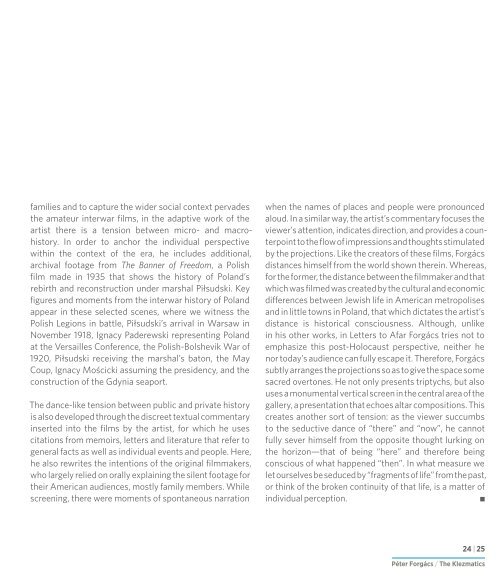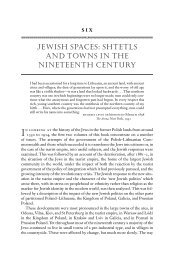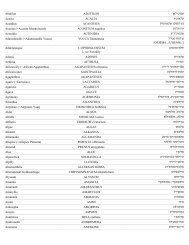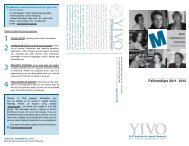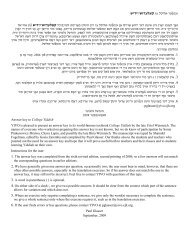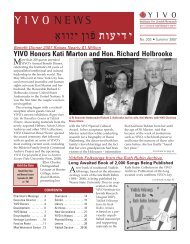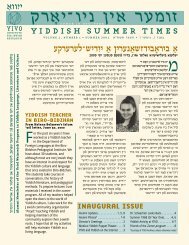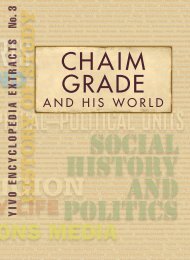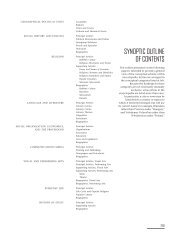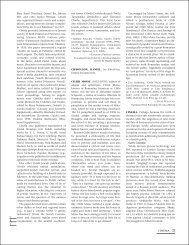Here - YIVO Institute for Jewish Research
Here - YIVO Institute for Jewish Research
Here - YIVO Institute for Jewish Research
Create successful ePaper yourself
Turn your PDF publications into a flip-book with our unique Google optimized e-Paper software.
families and to capture the wider social context pervadesthe amateur interwar films, in the adaptive work of theartist there is a tension between micro- and macrohistory.In order to anchor the individual perspectivewithin the context of the era, he includes additional,archival footage from The Banner of Freedom, a Polishfilm made in 1935 that shows the history of Poland’srebirth and reconstruction under marshal Piłsudski. Keyfigures and moments from the interwar history of Polandappear in these selected scenes, where we witness thePolish Legions in battle, Piłsudski’s arrival in Warsaw inNovember 1918, Ignacy Paderewski representing Polandat the Versailles Conference, the Polish-Bolshevik War of1920, Piłsudski receiving the marshal’s baton, the MayCoup, Ignacy Mościcki assuming the presidency, and theconstruction of the Gdynia seaport.The dance-like tension between public and private historyis also developed through the discreet textual commentaryinserted into the films by the artist, <strong>for</strong> which he usescitations from memoirs, letters and literature that refer togeneral facts as well as individual events and people. <strong>Here</strong>,he also rewrites the intentions of the original filmmakers,who largely relied on orally explaining the silent footage <strong>for</strong>their American audiences, mostly family members. Whilescreening, there were moments of spontaneous narrationwhen the names of places and people were pronouncedaloud. In a similar way, the artist’s commentary focuses theviewer’s attention, indicates direction, and provides a counterpointto the flow of impressions and thoughts stimulatedby the projections. Like the creators of these films, Forgácsdistances himself from the world shown therein. Whereas,<strong>for</strong> the <strong>for</strong>mer, the distance between the filmmaker and thatwhich was filmed was created by the cultural and economicdifferences between <strong>Jewish</strong> life in American metropolisesand in little towns in Poland, that which dictates the artist’sdistance is historical consciousness. Although, unlikein his other works, in Letters to Afar Forgács tries not toemphasize this post-Holocaust perspective, neither henor today’s audience can fully escape it. There<strong>for</strong>e, Forgácssubtly arranges the projections so as to give the space somesacred overtones. He not only presents triptychs, but alsouses a monumental vertical screen in the central area of thegallery, a presentation that echoes altar compositions. Thiscreates another sort of tension: as the viewer succumbsto the seductive dance of “there” and “now”, he cannotfully sever himself from the opposite thought lurking onthe horizon—that of being “here” and there<strong>for</strong>e beingconscious of what happened “then”. In what measure welet ourselves be seduced by “fragments of life” from the past,or think of the broken continuity of that life, is a matter ofindividual perception.2425Péter Forgács / The Klezmatics


